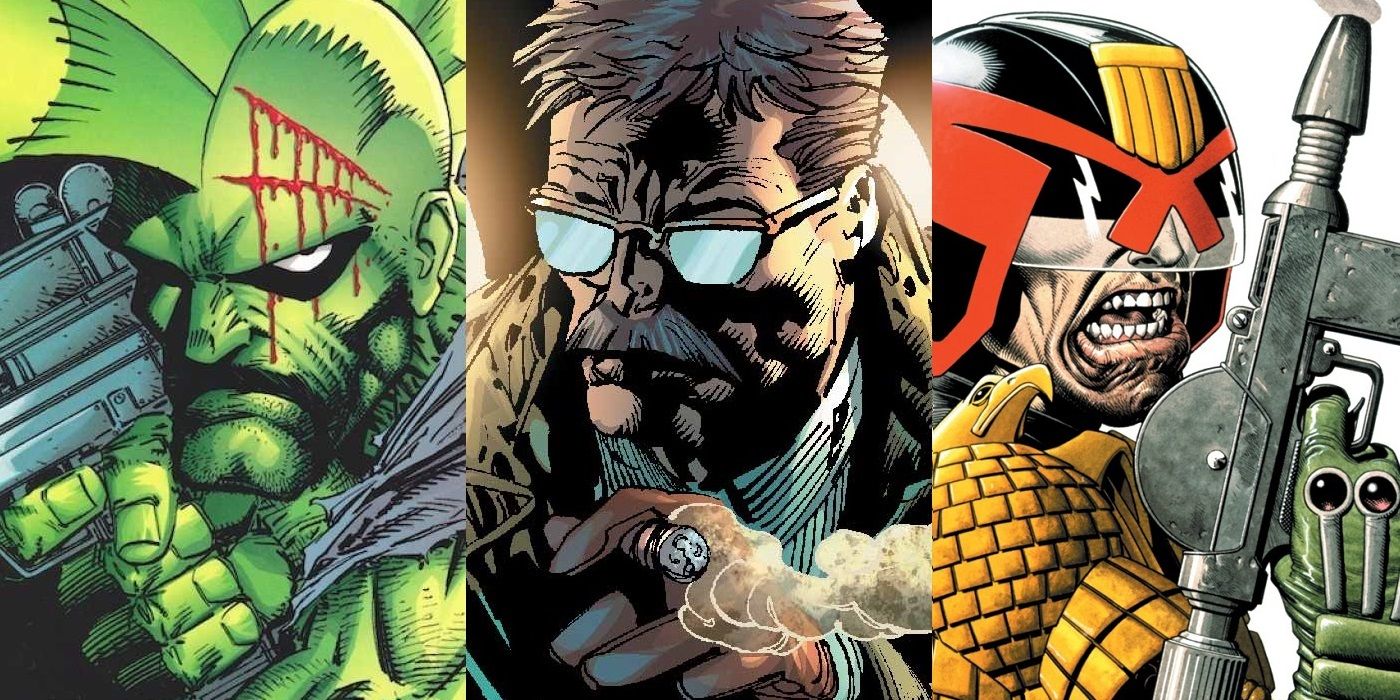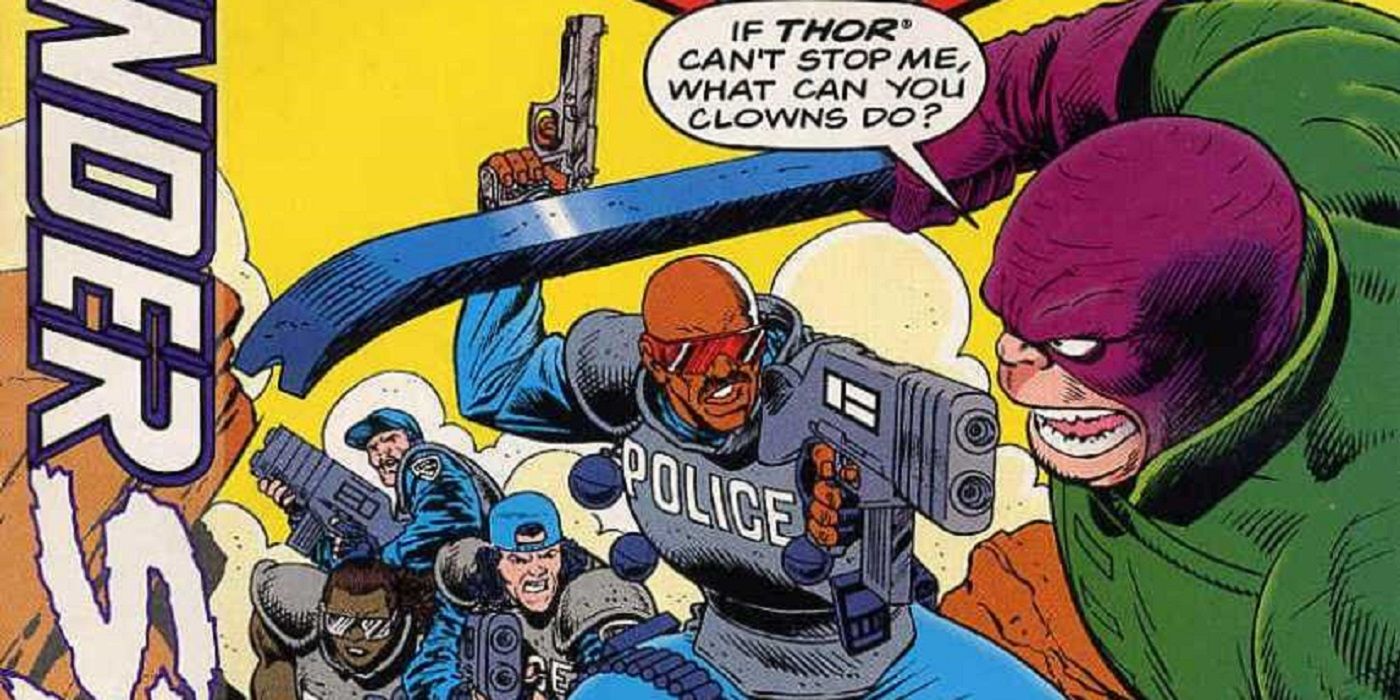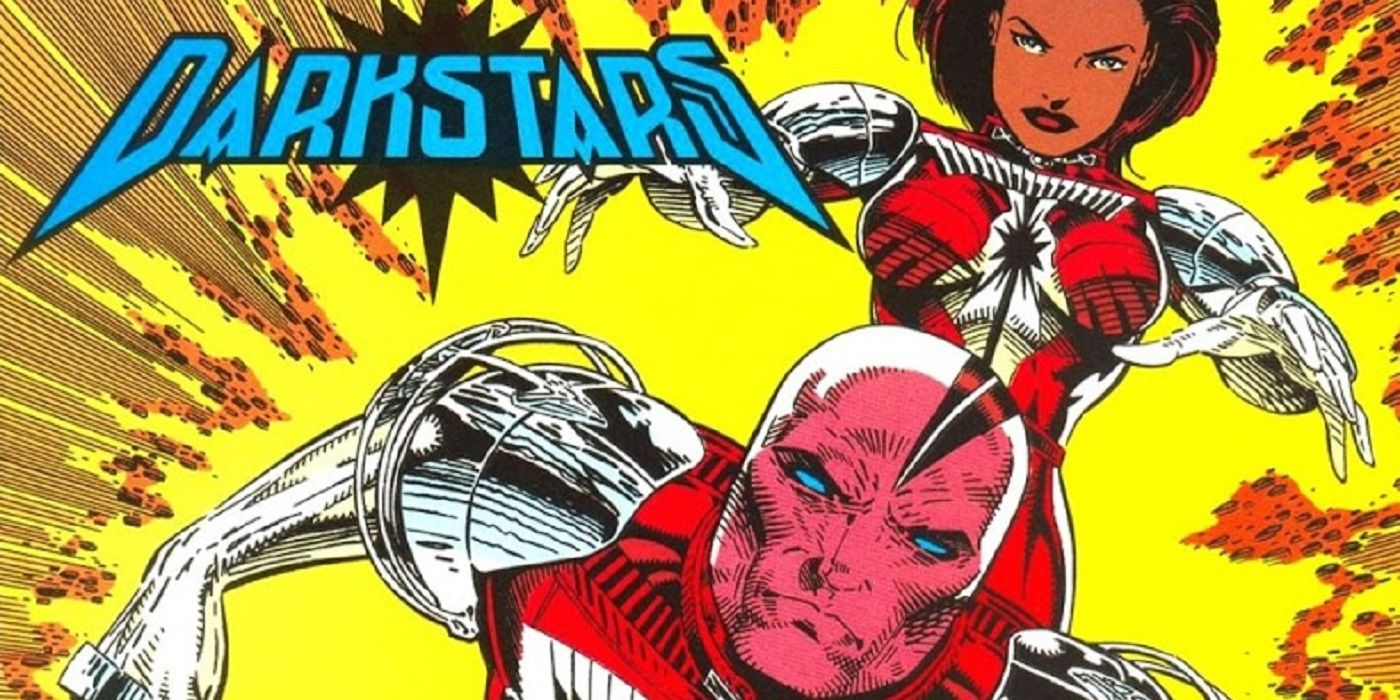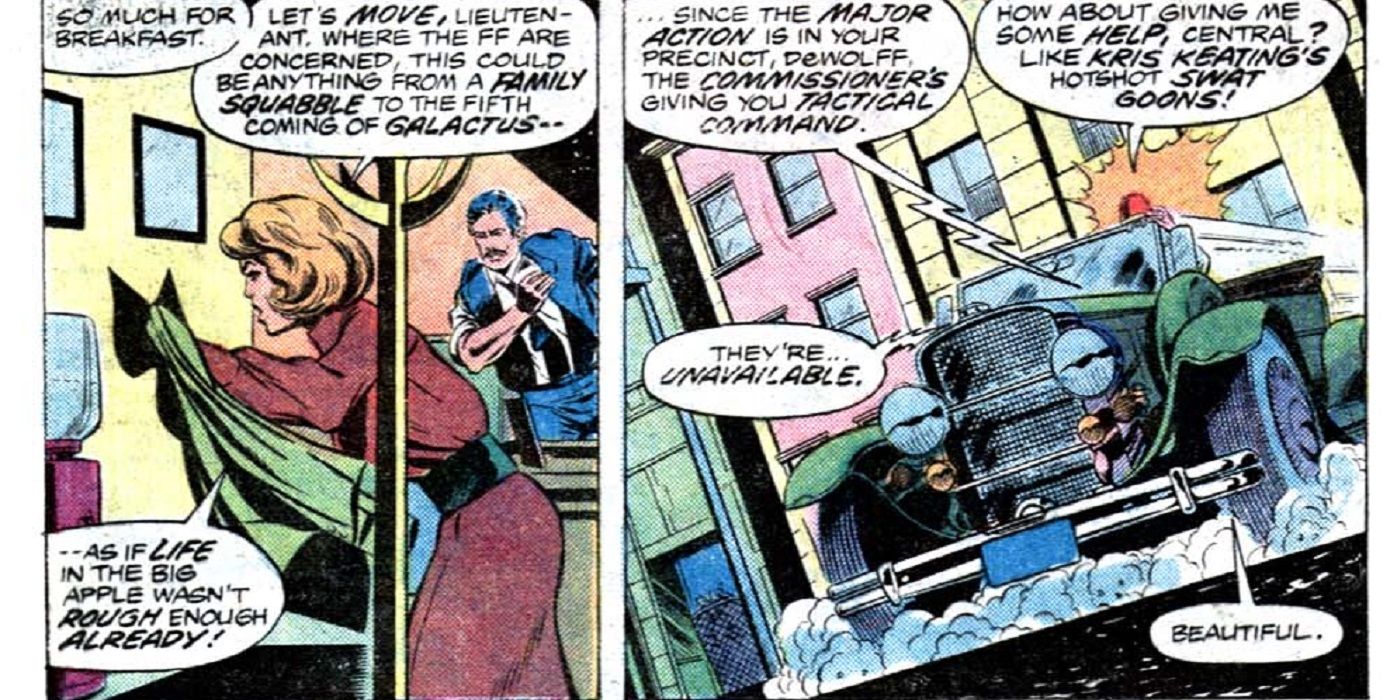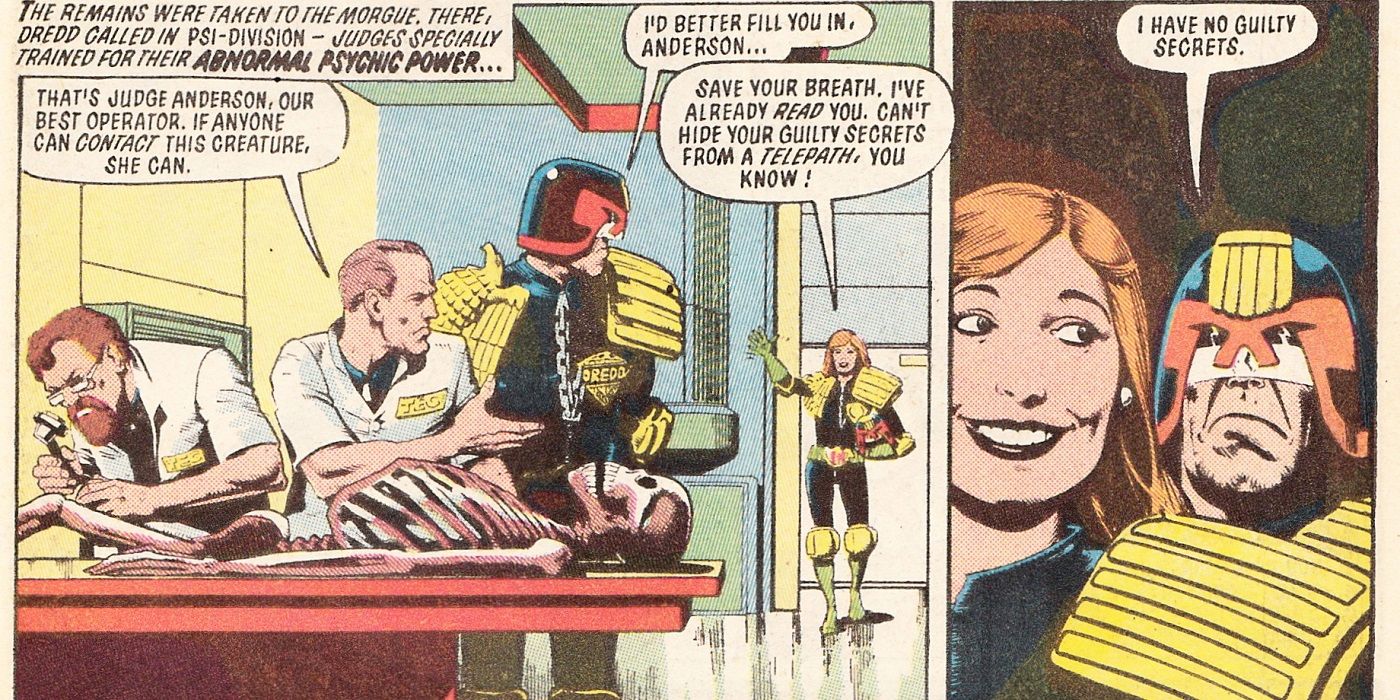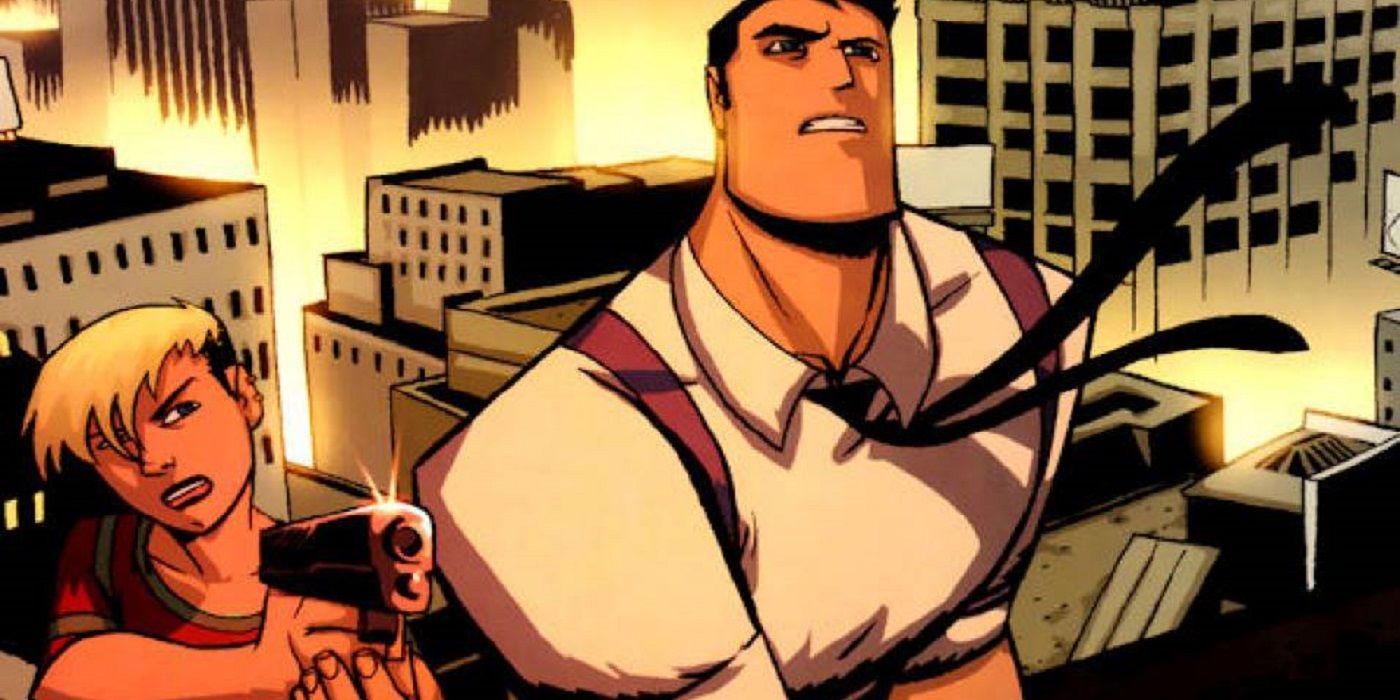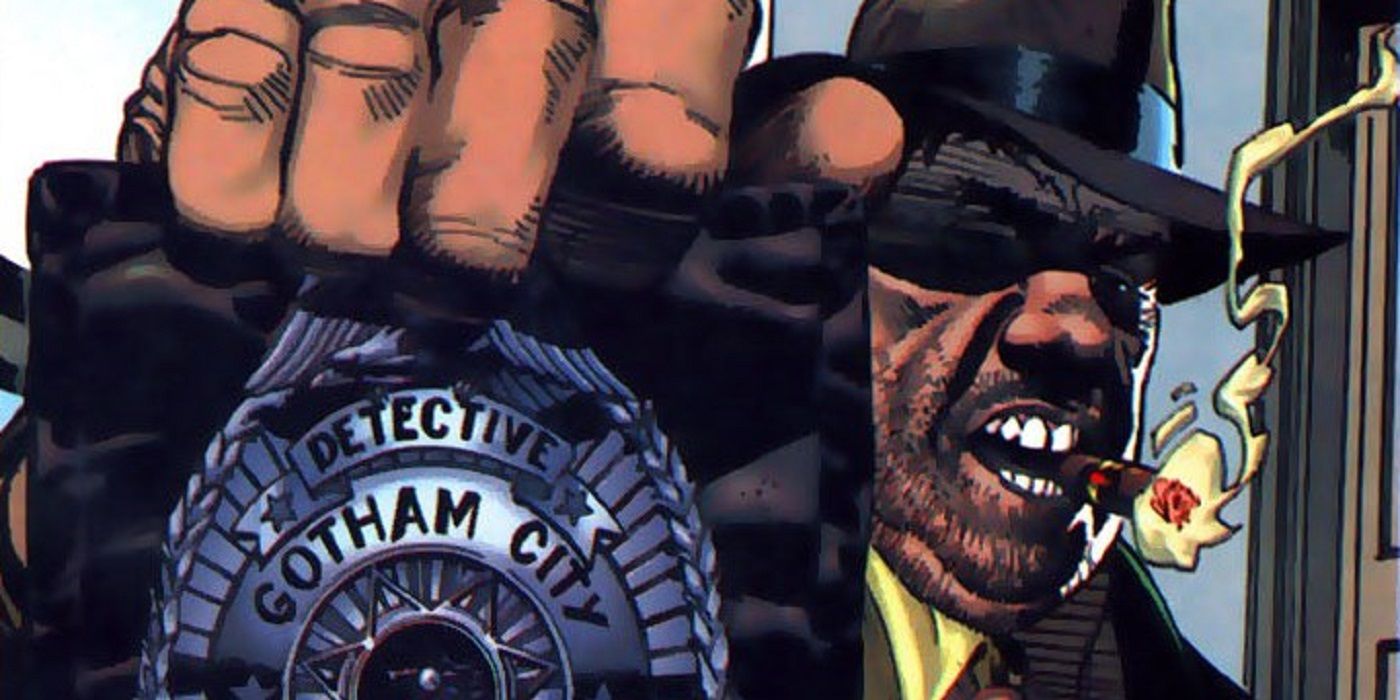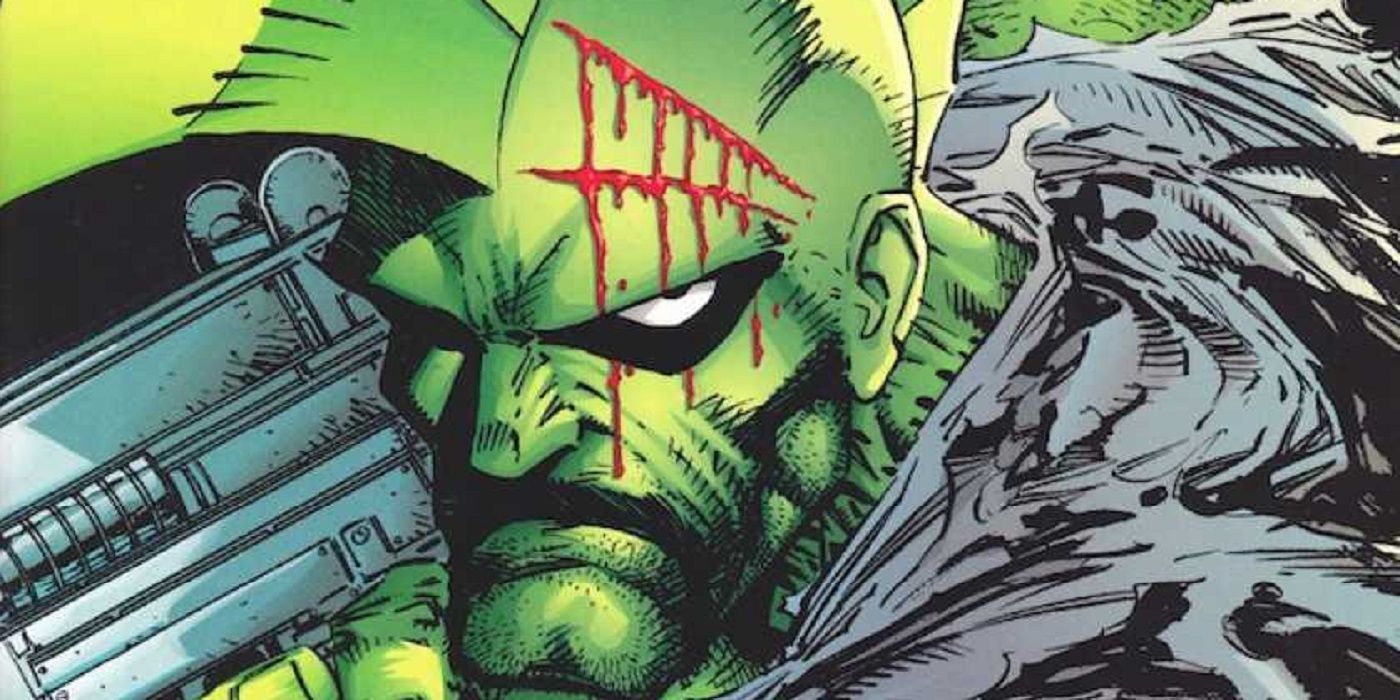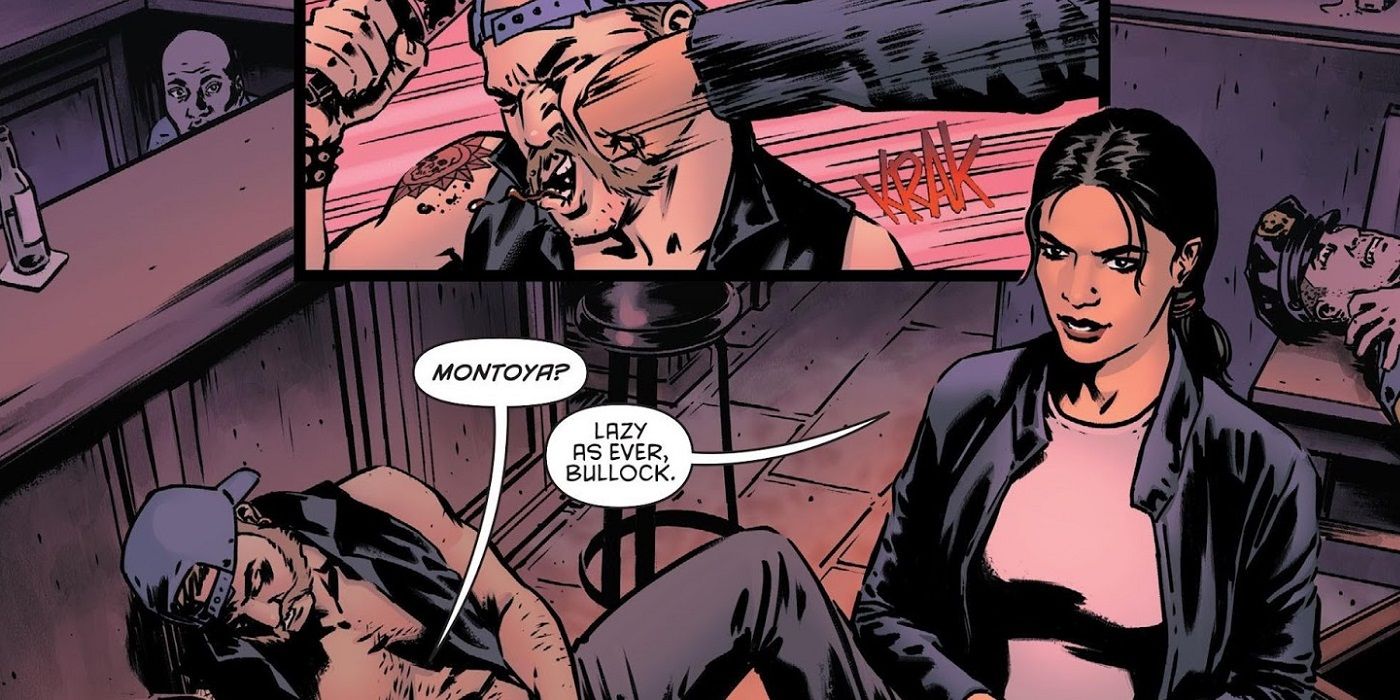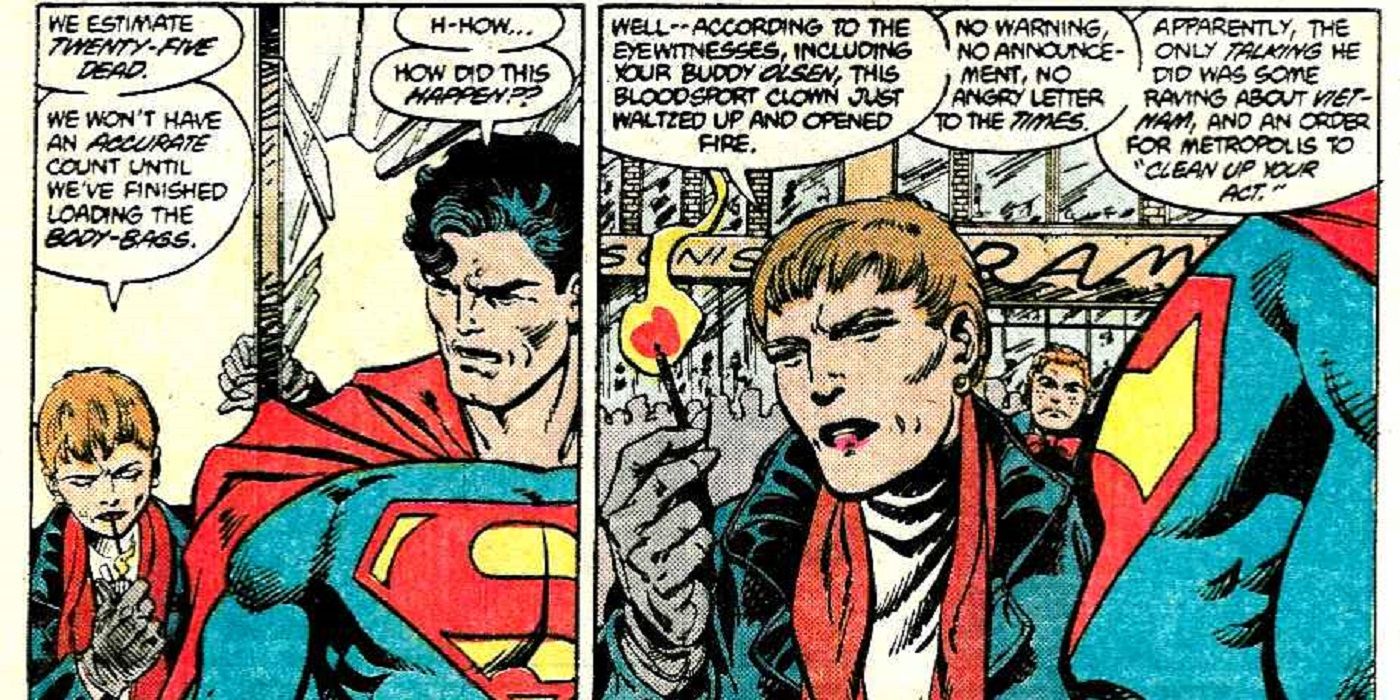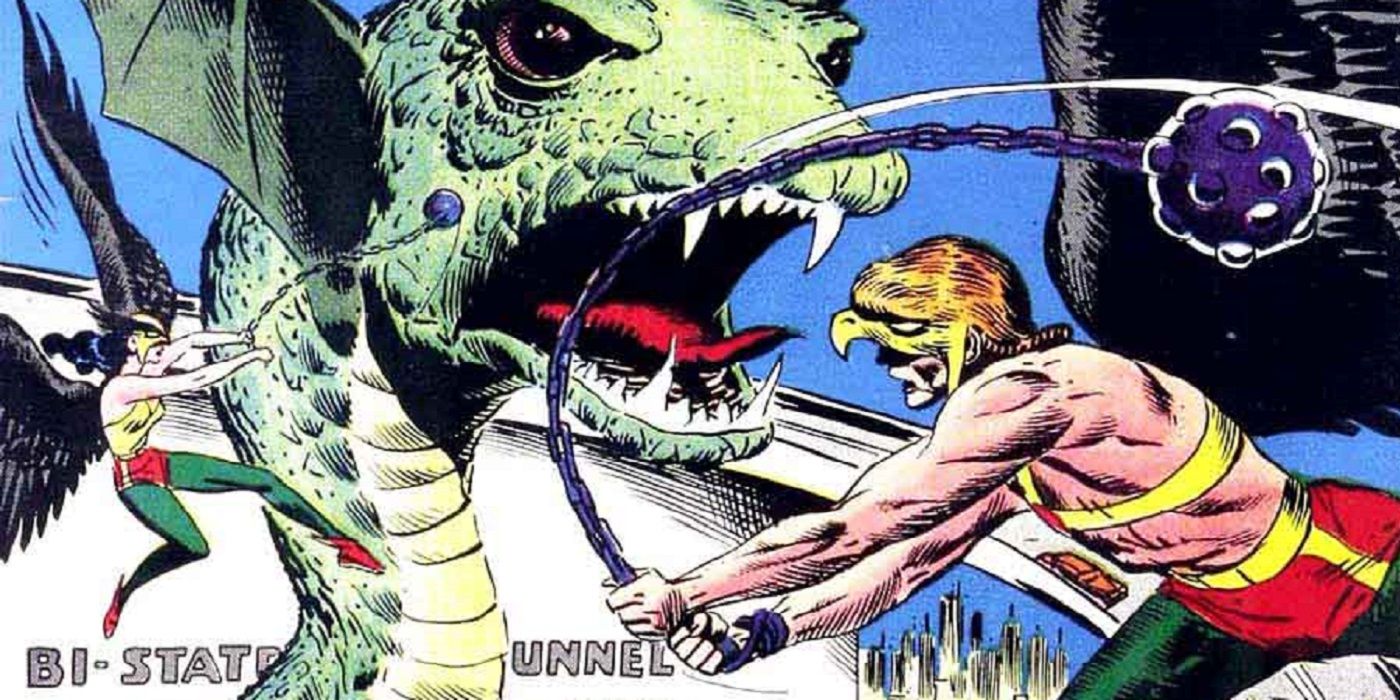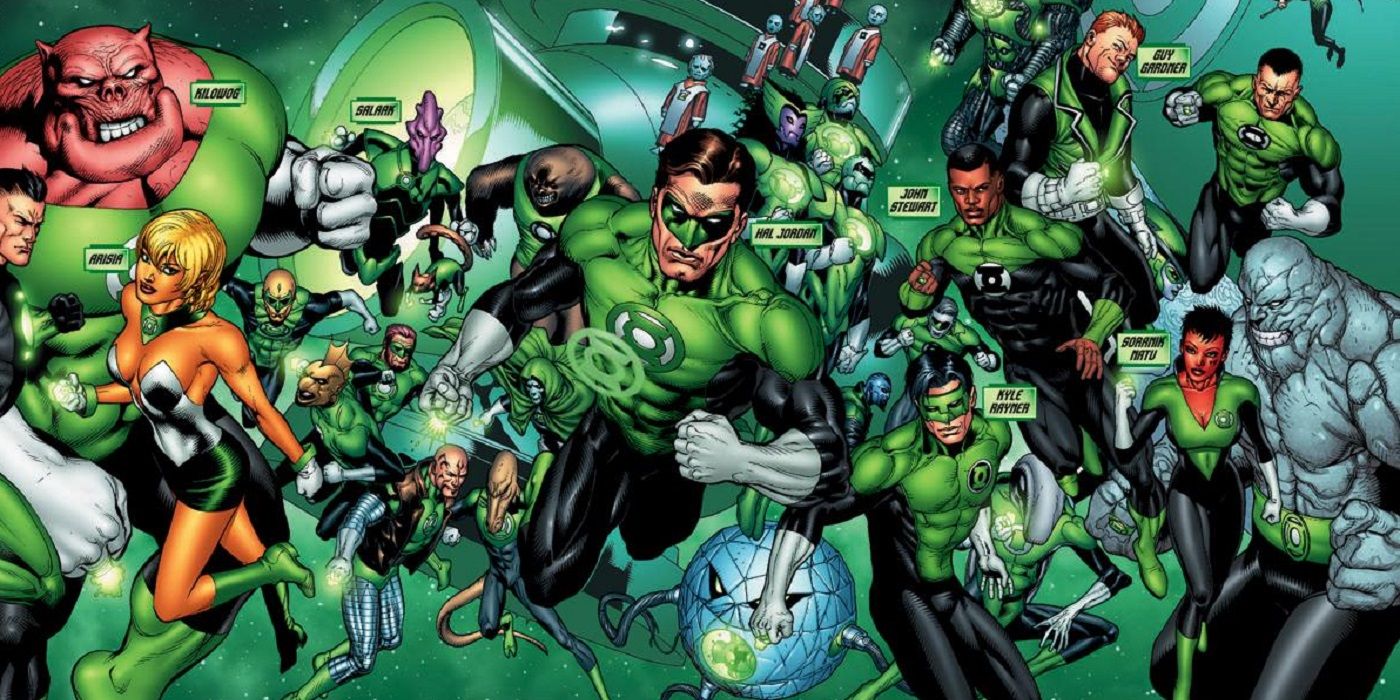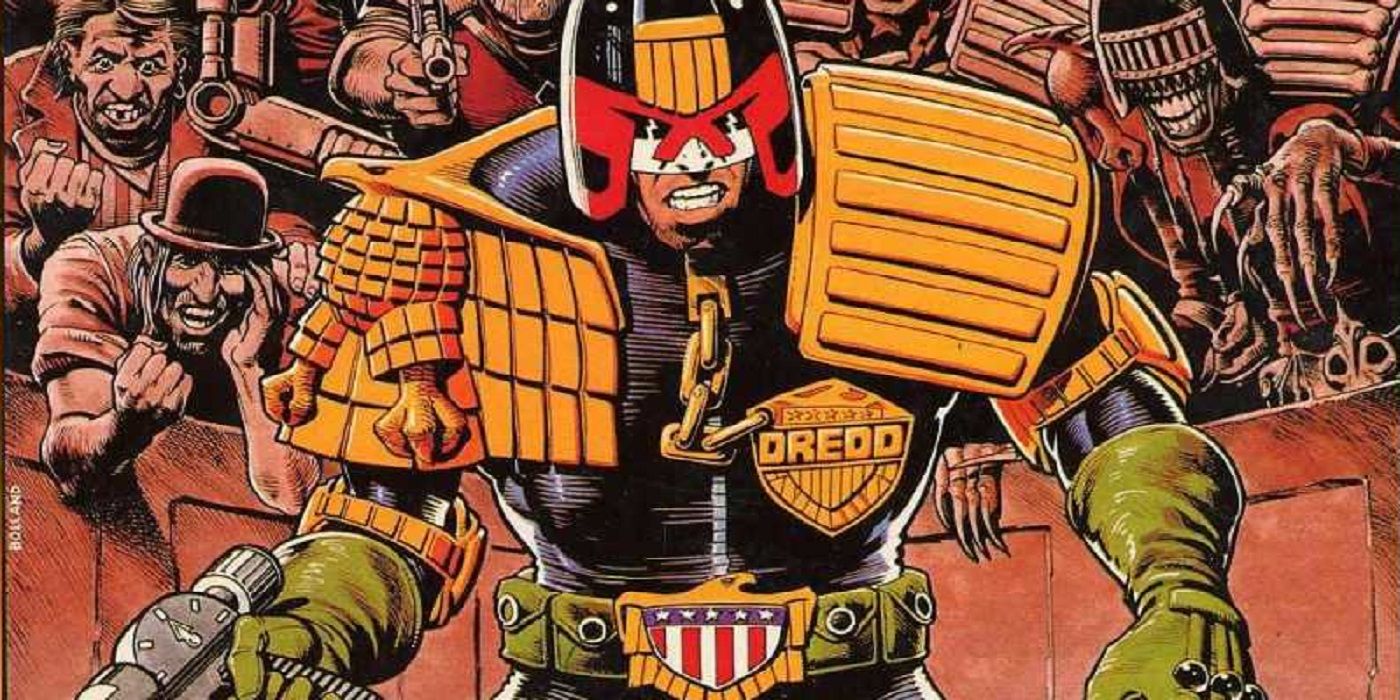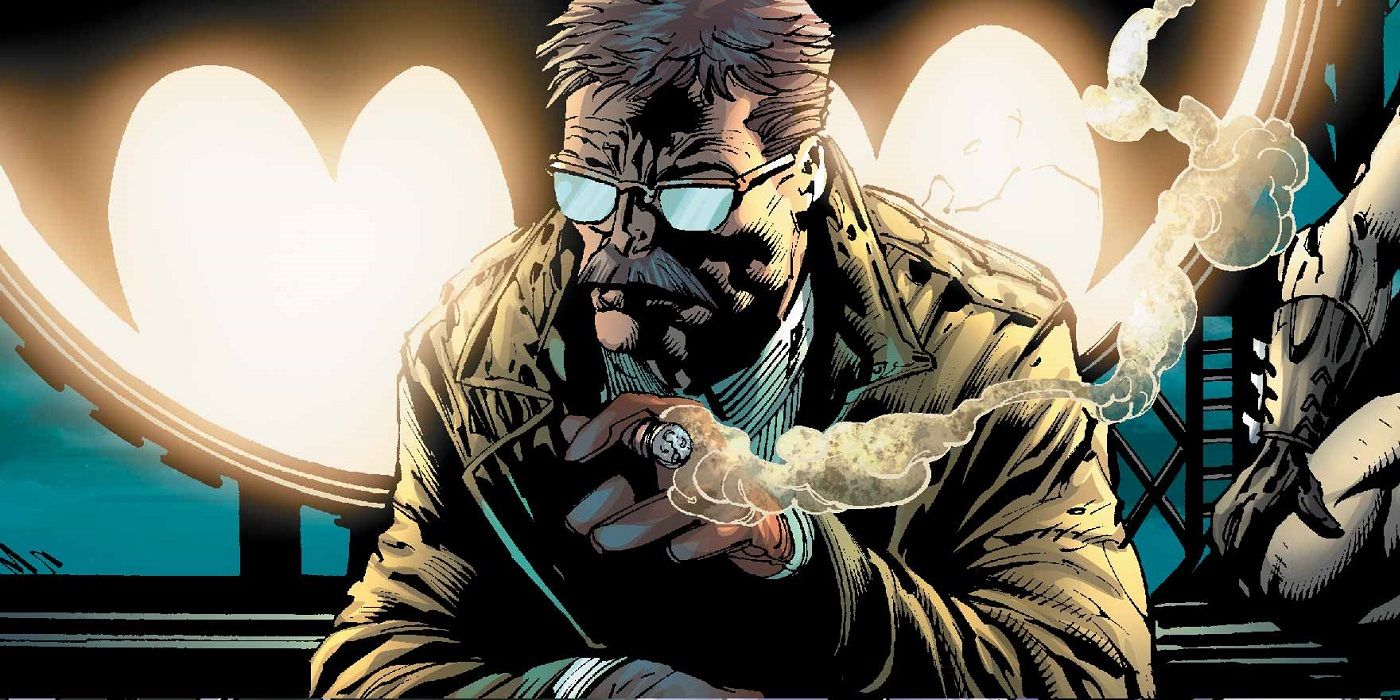For a genre that was, right from the beginning, almost inherently about people dressing up in costumes and breaking the law every other issue (or, in the case of Batman's earliest appearances, breaking necks every other issue), superhero comic books also have a long history of really cool law enforcement characters. Sometimes they work alongside the superheroes, sometimes they're antagonists of the superheroes, but they almost always play a major role in the narrative.
RELATED: Super Sleuths: The 15 Greatest Detectives in Comics
Here, we're counting down the greatest law enforcement officers in comic book history (stress comic book history, so no Dick Tracy). Defining the line between "law enforcement" and vigilantes or military officers in relation to superhero comics can be tricky at times, so we had to make some judgement calls on who was eligible (so no deputized Batman on the list, for instance), but we think that it is safe to call these characters top cops.
15 BISHOP
In their initial story arc on "Uncanny X-Men," now that they were the main plotters of the series, Jim Lee and Whilce Portacio introduced the time-traveling villain, Trevor Fitzroy, who made a splashy debut by killing off most of the Hellions and seemingly killing Emma Frost, as well. Soon after, a trio of cops from the future showed up to track him down. The leader of the XSE (Xavier's Security Enforcers) was named Bishop, and he had the ability to absorb kinetic energy and transform it into other forms of energy. Sadly, his two comrades were killed and Bishop was trapped in the past. He ended up joining the X-Men.
Bishop served with the X-Men admirably for many years, and then also worked as a special cop in the mutant area of New York City in a short-lived series called "District X." However, things went wrong when the baby known as Hope was born. Bishop remembered stories from his youth about how this baby led to Bishop's awful future, so he tried to kill her for some time. Eventually, Bishop was somewhat forgiven for his actions, but we ranked him pretty far down due to the whole "trying to kill a baby" thing.
14 CODE: BLUE
In the Marvel Universe, New York City is a very special place, in that it has by far the highest concentration of superheroes in the world, and it also has the highest concentration of supervillains. Due to the constant attacks from supervillains, the New York City Police Department ultimately got sick of being useless when it came to supervillain crime, so Lieutenant Marcus Stone convinced the department to authorize and fund a specialized team of cops that had the training and weaponry to successfully take down supervillains.
That group was called Code: Blue and it was led by Stone, all of whom debuted during Tom DeFalco and Ron Frenz's "Thor" run. Besides Stone, the team consisted of Margarita "Rigger" Ruiz, who was the teams's armorer; Julius Mad Dog" Rassitano, who was the team's sharpshooter; Daniel "Fireworks" Fielstein, the team's demolitions expert; Andrew "Jock" Jackson, the team's hand-to-hand combat expert; and Samuel "Mother" Majowski, the team's tactical expert.
13 DARKSTARS
The Controllers were an offshot of the Guardians of the Universe. They were normally isolationists, but they had operatives to help maintain order (which they were obsessed with). When the Green Lantern Corps collapsed in the late 1980s, the Controllers realized that there was a major power vacuum when it came to intergalactic law enforcement, so they put their efforts behind the expansion of their enforcement group, the Darkstars.
The Darkstars were a lot like Green Lanterns, only instead of power rings, they wore powerful suits of armor. Many of the Darkstars decided to get surgery performed to bond them with their armor, as they did not want to risk the split second delay between intent and triggering their weapons. Eventually, the Controllers grew irritated that the Darkstars weren't following their orders to the tee, so they dropped their funding, which also de-powered many Darkstars around the universe. Only those with self-contained power sources remained. They kept up the good fight until they slowly were all killed off. Both Donna Troy and John Stewart were once members of the Darkstars.
12 JEAN DEWOLFF
One of the hardest parts about being the regular writer on a book like "Marvel Team-Up" is that the series inherently changes leads each issue, as Spider-Man had to team-up with somebody different every issue. Sometimes this would be resolved by having Spider-Man team-up with a group of superheroes, so each issue could nominally co-star that specific hero. So, if, say, Spider-Man teamed up with Yellowjacket and the Wasp, one issue could be technically Yellowjacket and the other one would be the Wasp, despite it really being a shared story with both of them. Writer Bill Mantlo then introduced New York City Police Department Captain Jean DeWolff, so that he would have a character who would appear in every issue other than Spider-Man.
DeWolff was a rarity in that she was a copy who trusted Spider-Man. She also had an obsession with the 1930s, which informed how she dressed and even the car that she drove (a 1930s roadster). Tragically, DeWolff was later killed by the serial killer, the Sin-Eater. An already depressed Spider-Man was saddened further when he learned that DeWolff had a big crush on him.
11 JIM "THE GUARDIAN" HARPER
After creating one of the top superhero series of the early 1940s, Joe Simon and Jack Kirby left their creation, "Captain America Comics," due to a dispute with Timely Comics (now Marvel Comics) over compensation that had been promised to them. They left to National Comics (now DC Comics) where they were such big stars that National promoted their names on the covers of the comics, an extremely rare event back in the early days of comic books where covers did not carry creator credits inside.
For National, their two biggest hits were books based on the popular "Dead End Kids" film series (starring a group of wise-cracking, street-smart kids) -- the Boy Commandoes (their very biggest hit), which told the story of a group of young boys who were, well, commandoes in the war, and the Newsboy Legion, a group of paperboys who fought crime. The paperboys were always watched out for by the superhero known as the Guardian, who was secretly beat cop Jim Harper, friend to the boys.
10 PSI-JUDGE ANDERSON
In a world where law enforcement is ruled by "Judges" who serve as police officer, judge, jury and executioner, it just plain ol' made sense that they would eventually move into the world of pre-crime, judging people for crimes before they commit them. That was the basis for the Judges to introduce their Psi-Division in 1980 in the pages of the "Judge Dredd" feature in "2000 A.D."
The main star of the Psi-Division was Judge Cassandra Anderson, who could read minds and have premonitions of the future (hence the "Cassandra" name). Anderson was the perfect counterpart to the star of the book, Judge Dredd, as she was just as determined and devoted to her work as he was, but was personable and could joke. She soon became a fan favorite and eventually got her own "2000 A.D." series. After John Wagner and his co-writer, Alan Grant, split up their partnership, Wagner handled Judge Dredd stories while Grant wrote Judge Anderson tales.
9 CHRISTIAN WALKER AND DEENA PILGRIM
Before he became Marvel Comics' star writer, Brian Michael Bendis first created the independent, creator-owned series, "Powers," along with artist Michael Avon Oeming. The series is about two Chicago homicide detectives, Christian Walker and Deena Pilgrim, who are specifically assigned to homicides involving "powers," namely anything involving superheroes and supervillains. The two partners become close, but Pilgrim is shocked to learn that Walker used to be a superhero himself, becoming a cop after losing his powers. He was still in contact with many of his old superhero friends, though, which made his new job awkward at times.
Their professional and personal relationship has gone through some rocky paths over the years, from Walker gaining new powers (as part of a Green Lantern Corps-esque organization) and Pilgrim losing her job as a cop by going outside the law to stop some bad guys. Pilgrim eventually landed in the FBI equivalent to the Powers division and Walker ultimately ended up there along with her.
8 HARVEY BULLOCK
In the late 1960s, the writers and artists on the "Batman" titles made a concerted effort to make Batman a much darker character, to bring him back to his early roots as a figure of the shadows. In doing so, they also slowly returned him to a somewhat adversarial relationship with the police at times (although still being close friends with Commissioner Gordon). Lieutenant Bullock was introduced as just another cop who had a problem with a vigilante taking the law into his own hands. He came and went with no great fanfare.
Then, in the 1980s, Doug Moench brought him back and began to develop Harvey, coming up with his slovenly appearance and his own iffy view towards police procedures. Initially, Bullock was a dirty cop, but he was slowly redeemed and became a longstanding member of Batman's supporting cast (except for a weird period where he was part of the spy organization, Checkmate). He was nearly killed off in "No Man's Land," and then he was exiled from the comics during "Gotham Central," only to be brought back after "Infinite Crisis." He remains a recurring member of Batman's supporting cast.
7 DRAGON
The hero known as Dragon woke up naked in a burning field in Chicago, with no memories of his past or knowledge of where his dragon-like appearance or his super strength and invulnerability came from. Since he was without any real direction in his life, the cop who found him, Lieutenant Frank Darling, told him that he should join the Chicago Police Department. After initially hesitating, Dragon eventually did just that.
Dragon served the Chicago PD faithfully for many years (Chicago saw a whole lot of supervillain attacks, so Dragon was a busy man), albeit with breaks where he served with a government superhero team and also some alternate dimension storylines. In recent years, Dragon has retired after he lost his powers and his son, Malcolm Dragon, has taken over the starring role in Erik Larsen's "Savage Dragon." Malcolm currently represents the family name as a member of the Chicago PD himself.
6 RENEE MONTOYA
Created for "Batman: The Animated Series," Renee Montoya actually first appeared in an issue of "Batman" before the cartoon series came out, as the show's creators didn't want her to seem like she was just added to the Batman mythos by the show. She was originally an aide to Commissioner Gordon, but eventually she proved herself to be so adept that she was promoted to becoming a detective for Gotham's Major Crimes division, where she was notably paired up with Harvey Bullock.
After a number of years, Bullock was kicked upstairs and Montoya got a new partner, Cripus Allen. During this time, she dealt with Two-Face falling in love with her and outing her to her friends, family and workmates, which caused some grief for Montoya. Eventually, Montoya left the police department and became a costumed vigilante, taking over as the new Question. After the New 52, she was back to her pre-Question self.
5 MAGGIE SAWYER
Something that John Byrne was really good at during the 1980s was introducing gay characters into his comics at a time when you weren't really "allowed" to introduce gay characters into your comics. Byrne had to essentially use implications for everything, but when it came to Captain Maggie Sawyer, Metropolis' top cop and a quick friend of Superman's, you would have to be blind to not see the implications of her relationship with her girlfriend, reporter Toby Raines. Sawyer was the head of Metropolis' Special Crimes Unit (along with Dan Turpin, an old Jack Kirby creation). She was a major character for a number of years but then her appearances became more sporadic as time went by.
So, Greg Rucka brought her over to "Detective Comics," where she was transferred to the Gotham City Police Department, where she became a major player in the GCPD. She also broke up with Raines and eventually got involved with the superhero, Batwoman. Few characters have the chops to be supporting cast members of both "Superman" and "Batman," and Maggie is one of the very few (perhaps even the only one?) to ever achieve that honor.
4 HAWKMAN AND HAWKWOMAN
After the great success of first the Flash and then Green Lantern, DC Comics saw that there was a real market for revamped versions of their Golden Age superheroes. So, they tried out new approaches for other classic heroes, and in the case of Hawkman and Hawkwoman, they settled on a strong approach for the revamp. In the Golden Age, Carter Hall worked as an archaeologist during the day while fighting crime with his wife, Shiera, as Hawkman and Hawkgirl.
In the Silver Age, Hawkman and Hawkgirl were now aliens from the planet Thanagar who were sent to Earth as part of the elite Hawk-police (their names were now Katar Hol and Shayera Hol) to study Earth police techniques while fighting crime. Years later, after the "Crisis on Infinite Earths," they were revamped as more militaristic police officers in "Hawkworld." In recent times, Katar has returned to his old ways as a member of the Hawk-police (just in time to die in battle with Despero, but that might be a short-lived death, as he is likely going to return in Scott Snyder and Greg Capullo's upcoming DC Comics crossover event, "Dark Nights: Metal".
3 GREEN LANTERN CORPS
As noted above, one of the most successful Silver Age reboots of a classic National Comics Golden Age superhero was Green Lantern. In the Golden Age, Alan Scott found a magical lantern and became the Green Lantern. In the Silver Age, an alien named Abin Sur crashed on Earth and sought out a replacement before he died. He chose test pilot Hal Jordan, who got Sur's special Green Lantern Ring and became part of the Green Lantern Corps, an intergalactic law enforcement agency.
Each Green Lantern was assigned their own "Sector" of the Universe to patrol and deal with threats on the planets within those sectors. Hal Jordan soon became the greatest Green Lantern of them all, and in the years since, Earth has delivered a number of the most prominent Green Lanterns, from John Stewart to Guy Gardner to Kyle Rayner to the current Green Lanterns of Earth, Simon Baz and Jessica Cruz. The Green Lantern Corps have disbanded a few times over the years, but in general, they are the best law enforcement group in comic book history.
2 JUDGE DREDD
Likely the most controversial, if popular, law enforcement officer in comic book history is Judge Dredd, the star of his own long-running feature in the similarly long-running British comic book series, "2000 A.D." (Dredd debuted in the second issue of the weekly series, which debuted in 1977). The series is set in a future where the world is now peppered by gigantic "mega cities" which are filled with chaos, leading to the creation of the Judge program, where a series of "street Judges" patrol Mega-City and arrest, convict and then execute criminals.
The most prominent Judge is Judge Dredd, who is dedicated servant of the law, but his particular view of the "law" can be disturbing at times. In general, though, while he can be extremely violent at times, his actions are mostly in keeping with the terrible situation in which he resides. It is important to note, though, that while Dredd is dedicated to "the law," that doesn't always mean following authority, as he occasionally breaks from his bosses when he feels it is necessary. He was created by writer John Wagner and artist Carlos Ezquerra. Forty years later, Wagner still regularly writes his adventures in "2000 A.D."
1 JAMES GORDON
Who else could be number one besides the most famous cop in all of comic book history? Commissioner James Gordon made his first appearance in "Detective Comics" #27, where he is hanging out with his friend, socialite Bruce Wayne, when a murder occurs. Gordon heads to to the crime, not knowing that his friend, Wayne, is secretly the vigilante known as the Batman! Gordon did not play a major role in the earliest "Batman" stories, but quickly became Batman's main source of contact with the Gotham Police Department.
That has remained their relationship in the many decades that they have spent together since. Famously, after Batman was thought to be dead, it was Gordon himself who stepped in for a time, wearing a special mecha-Batman suit of armor as part of an attempt by the Gotham Police Department to have their own Batman while the "real" one was gone. It speaks to Gordon's talents that he was able to fill in pretty well for the real deal. A younger Gordon is the star of the TV series "Gotham" and an older Gordon will appear in the "Justice League" film this fall.
Who is your favorite comic book cop? Let us know in the comments section!

